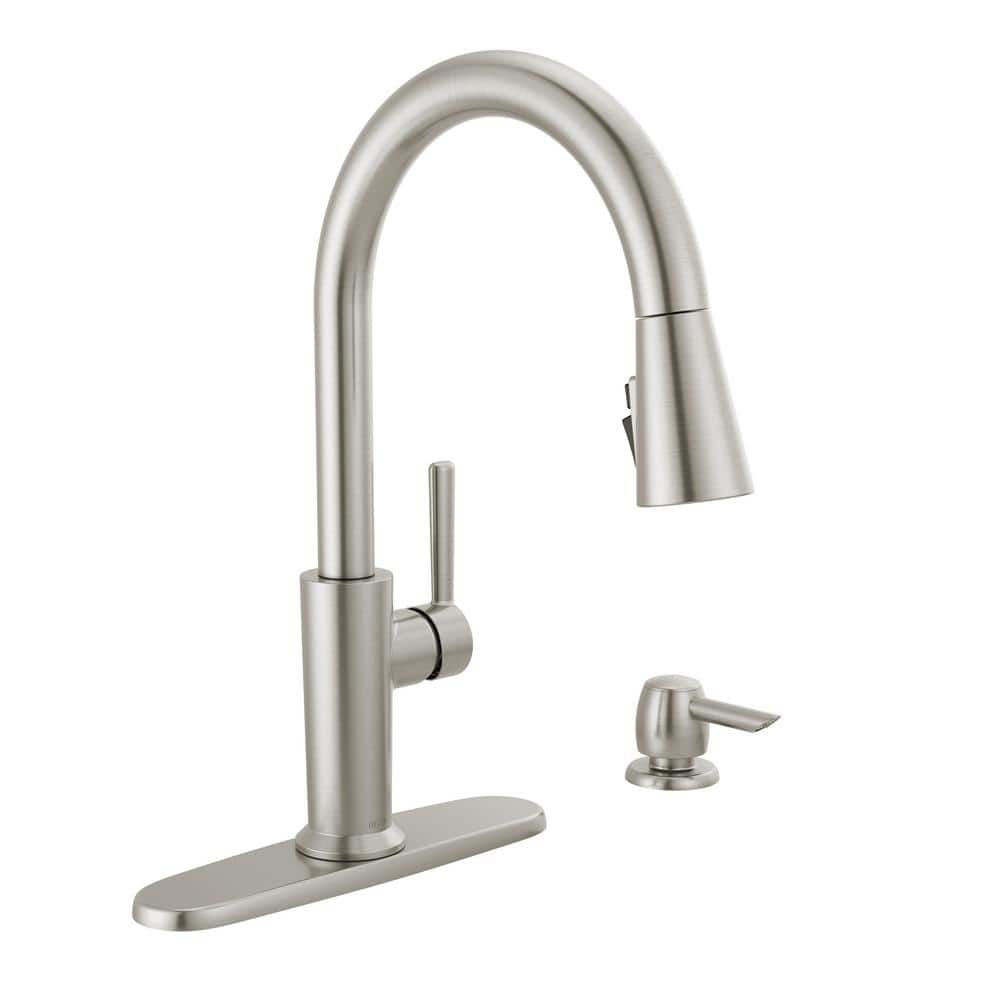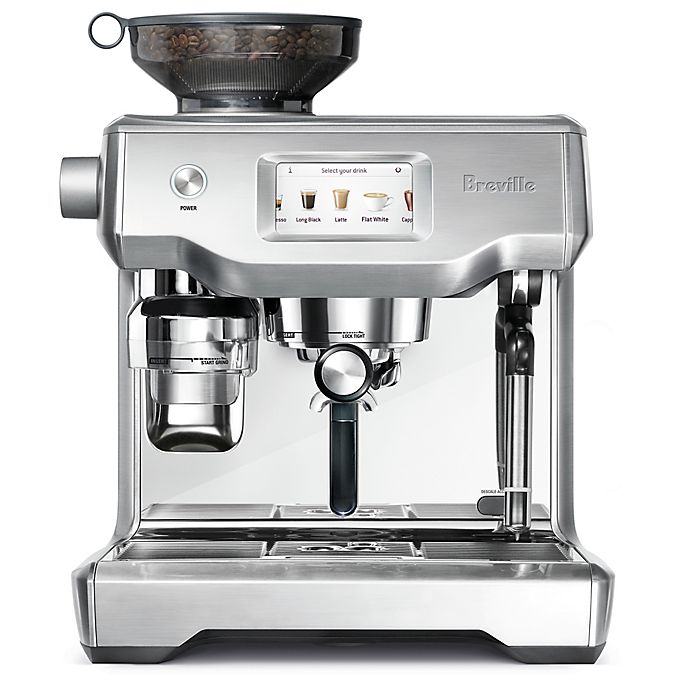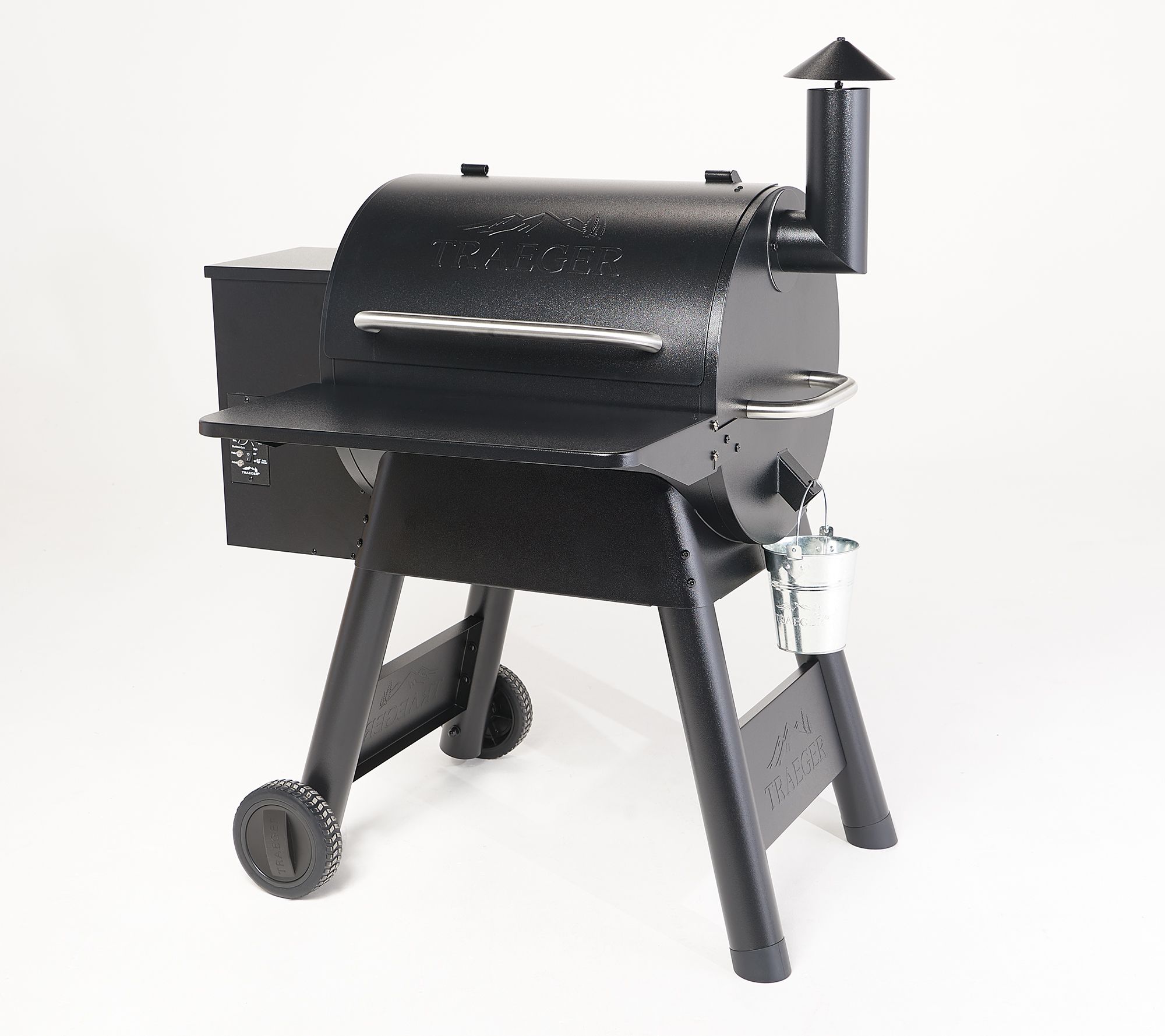Delta Emery Single-Handle Pull-Down Sprayer Kitchen Faucet with ShieldSpray and Soap Dispenser in SpotShield Stainless Steel
Single-hole, 2, 3 or 4-hole installation (deck plate included). Delta MagnaTite Docking holds pull down sprayer firmly in place. Delta kitchen faucet backed by Delta’s Lifetime Limited Warranty.
The Emery kitchen faucet offers an unrestrained look and subtle details, bringing a contemporary style into your kitchen. Delta magna tite Docking uses a powerful integrated magnet to set your pull down sprayer precisely into place and hold it there so it stays docked when not in use. Delta shield spray technology cleans with laser-like precision while containing mess and splatter. A concentrated jet powers away stubborn messes while an innovative shield of water contains splatter and clears off the mess, so you can spend less time soaking, scrubbing and shirt swapping. The multi-flow spray wand allows you to toggle from a water-efficient spray or stream for everyday tasks to a high water flow to fill pots and other large containers 33% faster. Delta spot shield technology helps to keep your kitchen faucet cleaner, longer by resisting water spots and fingerprints. Keep your space spotless with spot shield technology, available across a variety of finishes for the kitchen and bath. Delta kitchen faucets with DIAMOND seal technology perform like new for life with a patented design which reduces leak points, is less hassle to install and lasts twice as long as the industry standard. You can install with confidence, knowing that Delta kitchen faucets are backed by our lifetime limited warranty. Temporary on-demand flow increase based on standard 1.5 GPM rate at 60 psi.
- MagnaTite docking uses a powerful integrated magnet to snap your faucet spray wand precisely into place and hold it there so it stays docked when not in use and doesn’t droop over time
- Shieldspray technology powers off the mess without making a mess
- Concentrated stream cuts through messes and innovative water shield reduces splatter
- Spotshield technology helps your faucet or shower stay cleaner, longer by resisting water spots and fingerprints
- Soft, rubber touch-clean spray holes allow you to easily wipe away calcium and lime build-up with the touch of a finger
- Diamond seal technology is less hassle to install and helps your faucet perform like new for life, reducing leak points and lasting twice as long as the industry standard
- Everything you need is together in one convenient box, including integrated InnoFlex PEX supply lines
- Fits 1, 2, 3 or 4-hole installations with included optional 10 in. deck plate and soap dispenser
- ADA compliant
- High-arc, gooseneck design swivels 360° with a 20 in. retractable hose for added convenience during everyday kitchen tasks
- 3/8 in. O.D. straight, staggered PEX supply lines
- Hot/cold indicator markings
- Dual integral check valves in sprayer assembly
- Includes matching finish soap dispenser with 8 oz. reservoir
- Soap dispenser reservoir is refillable from the top
Additional information
| Connection size (in.) | 3/8 In. |
|---|---|
| Extended Hose Length (in.) | 20 |
| Faucet Height (in.) | 16.9375 |
| Spout Height (in.) | 8.5 |
| Certifications and Listings | ADA Compliant, CSA Certified |
| Manufacturer Warranty | Limited Lifetime Warranty |






by William
Great Faucet and love the increased flow over the other faucet we had.
by Moure
Installation process was straight-forward and simple. As for the life of the product, too early to tell. But all functions as expected.
by Steve
So far, the Delta faucet is great and looks very nice with new stainless steel sink.